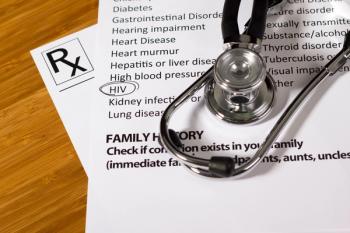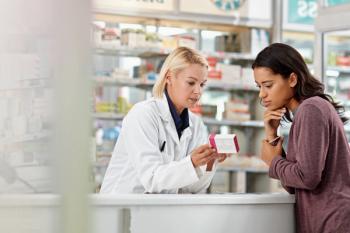
- Drug Topics October 2018
- Volume 162
- Issue 10
The 4 Tech Advances Benefitting Pharmacies and Patients
A closer look at how recent innovations are shaping how pharmacists and patients interact-for the better.
Over the last several years, pharmacists have embraced information technology, software, automation, and hardware to support their daily work load and help them better manage an increasing number of patients. But more innovations are coming. Advances in predictive modeling, robotics, mobile apps, and diagnostics are opening new horizons for pharmacists, which can vastly improve their ability to dispense medication, minimize errors, and monitor patient adherence.
Pharmacy Information Systems
Improving patient engagement and encouraging medication adherence after discharge is a top priority for pharmacists, especially as more focus on supporting value-based care, says Ken Perez, vice president of healthcare policy at
They can also help pharmacists flag patients who are abusing or selling opioid medications, if those systems are integrated with prescription drug monitoring programs (PDMPs), says Perez. PDMP databases are maintained by almost every state, and pharmacy information systems are beginning to integrate with them.
Rebecca Chater, RPh, MPH, FAPhA, director of clinical healthcare strategy at Omnicell, adds that more systems are also integrating with electronic health records (EHR). Newer systems will access actionable data, such as lab values and diagnoses codes. This will help pharmacists efficiently document their tasks and share data with the broader healthcare team, Chater says. “These emerging information systems will help break down silos. These new age systems are all about supporting patient care as it relates to medication usage.”
Mark Neuenschwander, president, the
Automated Dispensing
Perez considers automated drug dispensing an essential standard of care in hospitals. These systems facilitate patient safety and also cut down theft. “The information that is flowing through these dispensing systems has to be mined more extensively to gain insights,” he says. “For example, artificial intelligence, predictive modeling, and algorithms could be used to predict drug shortages, price increases, waste, and theft based on dispensing patterns.”
In the community pharmacy setting, Neuenschwander thinks most dispensing systems will remain semiautomated, depending on whether the pharmacy wants to invest in more expensive sophisticated automation. But Amazon’s purchase of PillPack will influence pharmacies to check out more automated dispensing options, he says. “To stay competitive, the smart retail pharmacy might consider establishing a competing dispensing system that combines smartphone apps and barcode scanning to prompt patients to take their medications,” he says.
Chater agrees there is room for growth for automated dispensing in community pharmacies. “They are not ubiquitous in community pharmacies, although they’ve gained significant traction,” she says.
One way to improve patient adherence and produce better health outcomes is to provide medications in multimedication packaging. But this is arduous when it’s done manually, says Chater. “Having automation in place helps pharmacists provide this service to patients without consuming too much time.”
This is where medication synchronization in the pharmacy comes into play, she says, noting that the software and algorithms needed to make it work is generally available, but not widely used. Such is also the case for the robotic automation needed for multimedication packaging. These systems will appear in the future as more pharmacies become more patient-centric, she says.
Mobile Apps
The number of mobile apps that can be used in pharmacy practice is growing, and helping pharmacists better care for patients and their business, says Timothy Aungst, PharmD, an assistant professor of pharmacy practice at
“Mobile apps are finding greater use for reference purposes,” he says. “Drug information contained in the apps is an important practical resource in pharmacy practice.”
There also has been a push in communication apps, trying to make more concise platforms for patient-pharmacist communications, he says. “Pharmacists would be able to communicate better with patients and their providers.”
Aungst predicts that apps will soon be integrated with EHRs, and patients will be able to share lab information with their pharmacists, who will then work with physicians to determine the best medication for them. He expects HIPAA-compliant secure texting communication platforms to grow.
Apps are already helping patients access their medical information. They send reminders for appointments, laboratory tests, and test results, Aungst says. They also improve remind patients to take their medications as prescribed.
Noninvasive Glucose Monitoring
Testing blood sugar several times daily is burdensome for diabetic patients. Many don’t test as frequently as they should, which can result in poor control of blood glucose levels.
Several technology companies are working to create noninvasive glucose monitoring technologies. For instance,
Welborn says that a device that measures glucose levels noninvasively at 15-minute intervals without bothering the patient would be ideal. “The entire healthcare team needs to know when glucose levels might be high or low as soon as possible so that the physician and pharmacist can adjust the treatment plan,” he says.
Articles in this issue
almost 7 years ago
Lower Drug Prices Aren’t Worth Higher Health Risksabout 7 years ago
How to Talk About Being a Pharmacistabout 7 years ago
What it’s Like to Be an Oncology Pharmacistabout 7 years ago
How Mergers Will Affect Pharmacistsabout 7 years ago
Negotiating Better Hours: A Guide for Pharmacistsabout 7 years ago
How to Create the Job You Wantabout 7 years ago
More Pharmacists Move into Medical Practices, More Doctors See Valueabout 7 years ago
Top 5 Ways to Make Vaccinations Less Frustratingabout 7 years ago
The 4 Keys to Medication Adherenceabout 7 years ago
The Best Pharmacies, New Pharmacy Degrees, and More NewsNewsletter
Pharmacy practice is always changing. Stay ahead of the curve with the Drug Topics newsletter and get the latest drug information, industry trends, and patient care tips.















































































































